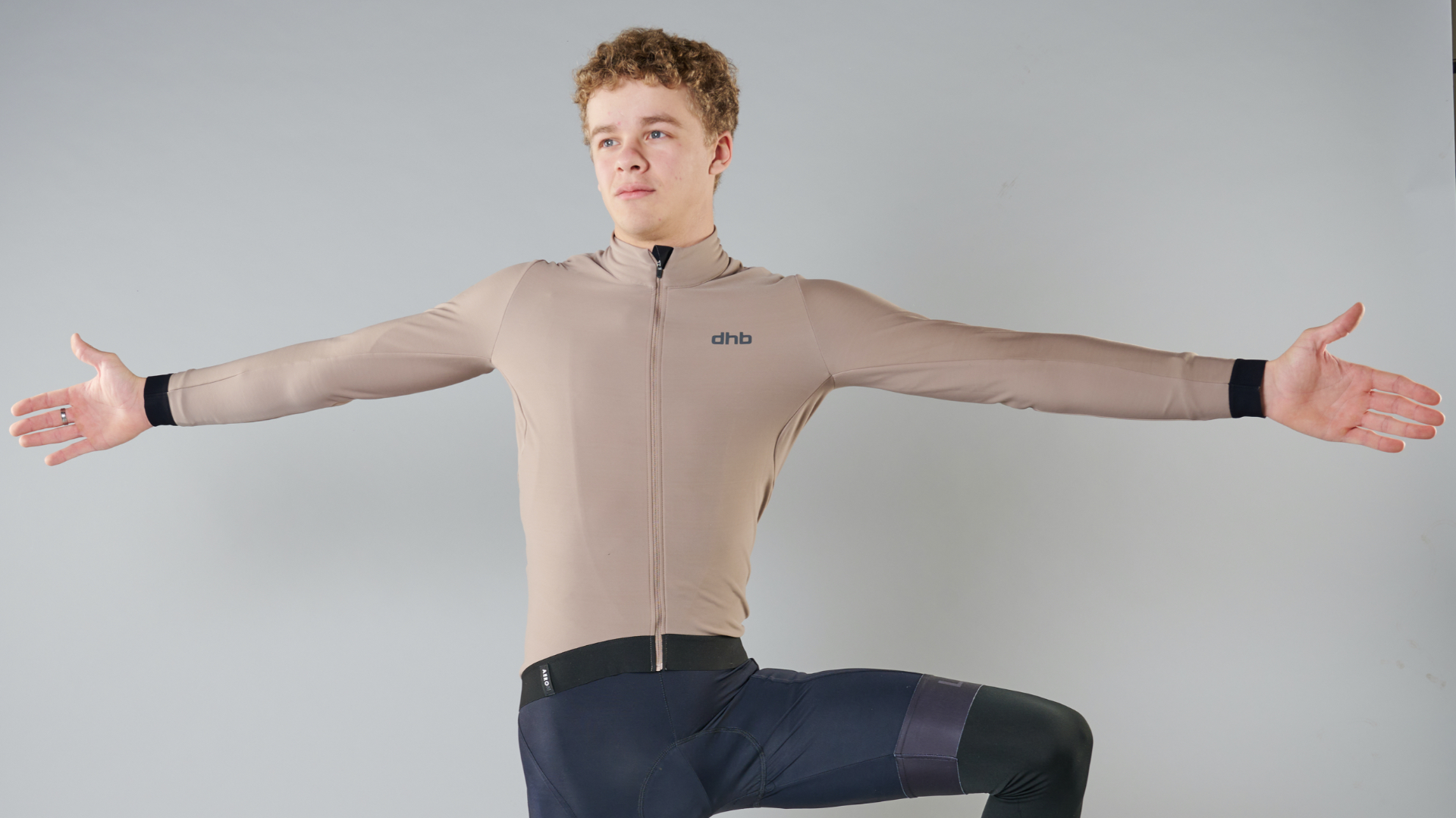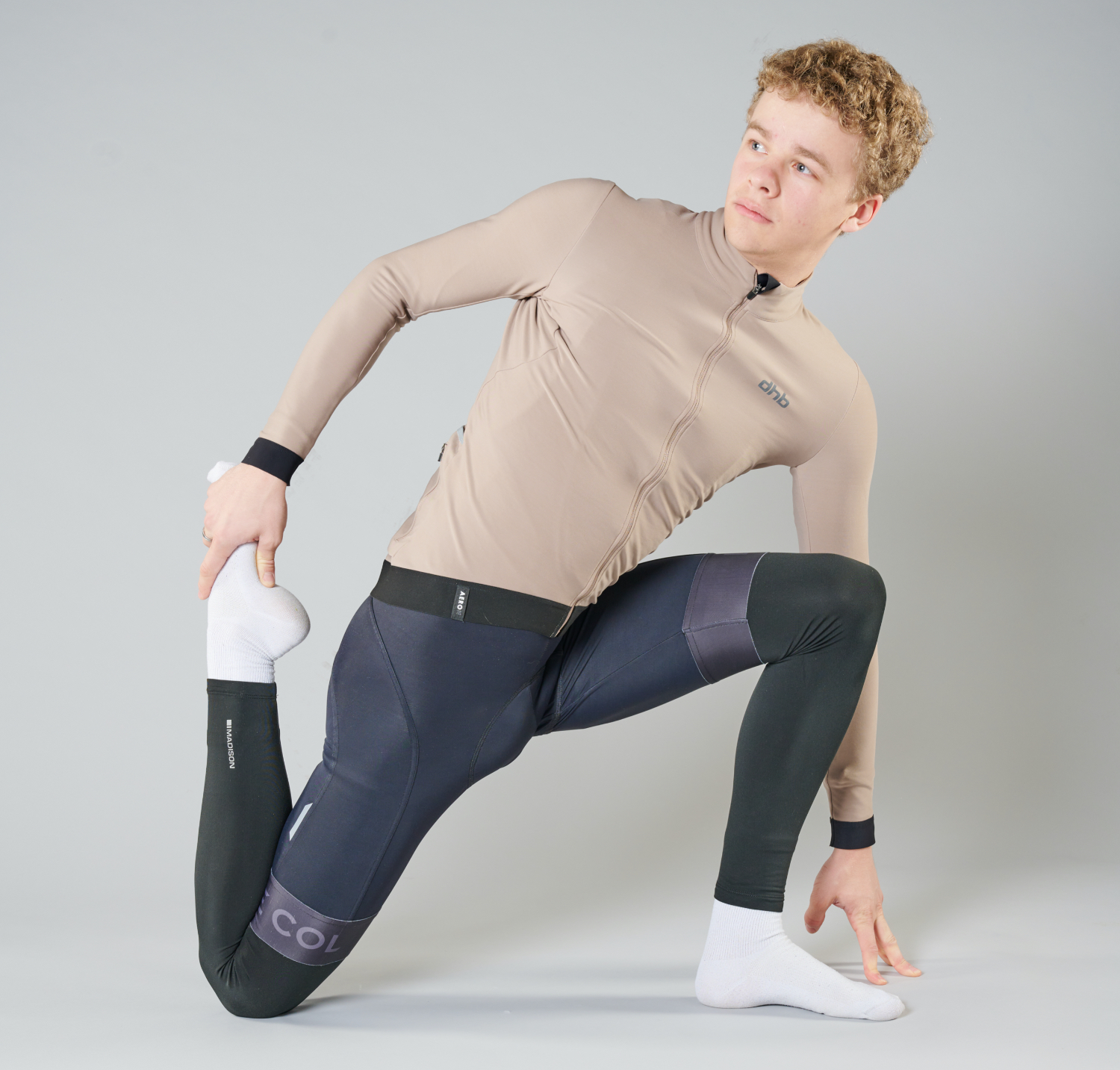These stretches will save you more watts than any aero bike could ever promise
Can pulling on tendons and muscles really benefit your riding – or is that simply stretching the truth?


Stretching might not directly make you go faster, but indirectly it could. If stretching improves mobility and flexibility, that may allow you to hold a more powerful or more aerodynamic position, improving performance that way.
With the rider making up around 85% of a bike/cyclist unit's Coefficient of Drag Area (CdA), it's universally accepted that there are greater gains to be found via optimising position, than in optimising the bike for the vast majority of riders, especially amateurs. However, many cyclists are held back by a lack of mobility.
But what stretches should you do, how often should you do them, should you use bands and how long before actually riding should you stretch? Can stretching even have a negative effect on your cycling performance?
Physio and university lecturer Tim Piggott answers all these questions.

Tim Piggott is a lecturer at the University of Salford, as well as being a physio, coach and bike-fitter. He has worked with countless elite athletes, including GB Olympic and Paralympic stars. His username on X is @HP3_Tim and on Instagram he is timpigotthp3.
At a physiological level, what happens to tendons and muscles when they are stretched?
In the case of static stretching, the tissue is slowly elongated to tolerance and the position held at the greatest tolerated length. This induces only temporary changes in tissue length, either by altering the nervous system and changing the length of stretch that feels tolerable, or by a temporary elongation of the fibres within the muscle or tendon. Longer-term changes in tissue length are more effectively achieved through loaded stretching or eccentric weight training.
Which method of stretching results in longer-lasting changes?
Get The Leadout Newsletter
The latest race content, interviews, features, reviews and expert buying guides, direct to your inbox!
Eccentric loading [where muscle lengthens under load] has been shown to result in longer-lasting changes due to neo-myogenesis [formation of new muscle tissue]. This creates structurally longer muscles rather than simply stretching the existing tissue. The process likely involves the release of growth factors such as insulin-like growth factor (IGF-1), platelet-derived growth factor (PDFG) and fibroblastic growth factor (FGF) which then stimulate the production of new muscle cells and muscle maturation.
How often should cyclists stretch?
It depends on the individual – it needs to be an individualised approach, depending on the type of cyclist and how flexible they are naturally. If you’re naturally flexible, stretching probably doesn’t need to be a big part of your weekly routine. If you’re one of those people who’s really quite stiff, you may need to include more stretching in your weekly routine. If you’re neither extreme, it’s a case of finding out what is right for you, bearing in mind that that might change over time.
What are the best stretches for cyclists?
Hip flexor and hamstring stretches such as the 90/90, as well as stretches for the upper back (see panel). These areas can become tight because of the sustained posture of cycling. Upper-back stiffness can have a knock-on effect to the neck and shoulders.
5 of the best stretches for cyclists

90-90 HAMSTRING STRETCH
Lying on your back, extend one leg straight out with the other bent at the hip and knee at a 90° angle. Then extend the bent leg into the air and repeat 10 times. Change sides and repeat when done.
KNEELING T-SPINE ROTATION
Half-kneel with your left hip and leg in front up against a wall. Place your arms together out in front of you, then with the right arm move outward and round until your body is in a ‘T’ position. Bring the arm back around. Once your arms are back together, lift the left arm over your head until your arms make the T position while your body faces the wall, and bring it back around. Repeat around 10 times. Change sides and repeat once done.
HALF-KNEELING DIAGONAL STRETCH
Kneeling with your left leg in front and your right hand on your chest, rotate your body left until your right hand reaches your left foot and bend back around. Repeat 10 times and then change sides.
KNEELING QUAD STRETCH WITH PULSE
Kneeling down, place your right foot on a bench behind you with your left leg out in front. Hands on your hips, rotate your hips back and forward again in a rapid pulse-type movement 10 times. Swap legs and repeat.
KNEELING QUAD STRETCH WITH TWIST
Kneeling down, place your right foot on a bench behind you with your left leg out in front of you. Place your left hand on your hip and right arm in the air and twist to your left side. Repeat around 10 times. Swap legs and arms, then repeat.
Should cyclists stretch before riding?
Only if they feel it benefits them. Stretching the back and dynamic movements such as leg swings can be best for warming up. It’s a basic check that everything is moving nice and freely. The best combination of stretches will vary from individual to individual, and from day to day. One day you might need to do quite a lot, whereas another day you might not need to do any at all.
Can stretching before riding negatively affect performance?
Yes, but only if the stretches are done literally seconds before the bike effort. If you’re a track sprinter and you go and do lots of stretching, then jump straight on the bike and try to explode out the blocks, your performance will be reduced. The many research papers showing that stretching reduces explosive power immediately after stretching don’t apply to most real-life cycling circumstances. Most of us are not performing stretches immediately before explosive efforts.
What is the latest research on stretching for cyclists?
There was an interesting paper published by Thomas et al in the Journal of Strength & Conditioning Research (2023) showing that stretching could actually increase your strength. It studied long-duration stretching carried out on a very regular basis and found that it may improve strength. In the short term, stretching negatively affects strength, but this study suggests there may be a longer-term gain.
What are the best desk stretches for time-restricted cyclists?
The best thing to do is to try to prevent that stiffness from developing in the first place. If you keep moving, you don’t get stiff. While working at the desk, try to vary your positions. Stand up and move around every so often. Stay well hydrated – the increased pee breaks will help keep you moving. Avoid sitting for prolonged periods without changing position. Use opportunities such as phone calls to stand up and move. Any sustained posture for too long isn’t ideal; standing all day isn’t ideal either – stand-up desks aren’t the best solution.
Is stretching with bands recommended for cyclists?
There are lots of different ways to get the same end result. Yes, you can use heavy mobility bands or yoga straps to maybe push a little bit harder and further. Do the flexibility work that you most enjoy – the exercise that works is the exercise you’re motivated to do.
This article was originally published in the December 28, 2023 edition of Cycling Weekly. Subscribe online and get the magazine delivered direct to your door every week.

Thank you for reading 20 articles this month* Join now for unlimited access
Enjoy your first month for just £1 / $1 / €1
*Read 5 free articles per month without a subscription

Join now for unlimited access
Try first month for just £1 / $1 / €1
Charlotte Broughton is a British rider, racing for the KDM-Pack women’s cycling team. An accomplished writer, she is a regular on the pages of Cycling Weekly magazine.
-
 Aero bikes with gravel wheels?: Six tech insights from Paris-Roubaix Femmes
Aero bikes with gravel wheels?: Six tech insights from Paris-Roubaix FemmesEverything we found out about tyre widths, self-inflating systems, and wheel choices from the cobbled Monument
By Tom Davidson Published
-
 'This race is absolutely disgusting': Peloton reacts to another brutal Paris-Roubaix Femmes
'This race is absolutely disgusting': Peloton reacts to another brutal Paris-Roubaix FemmesNow in its fifth edition, Paris-Roubaix Femmes is still a tough race, even for the best bike riders in the world
By Adam Becket Published